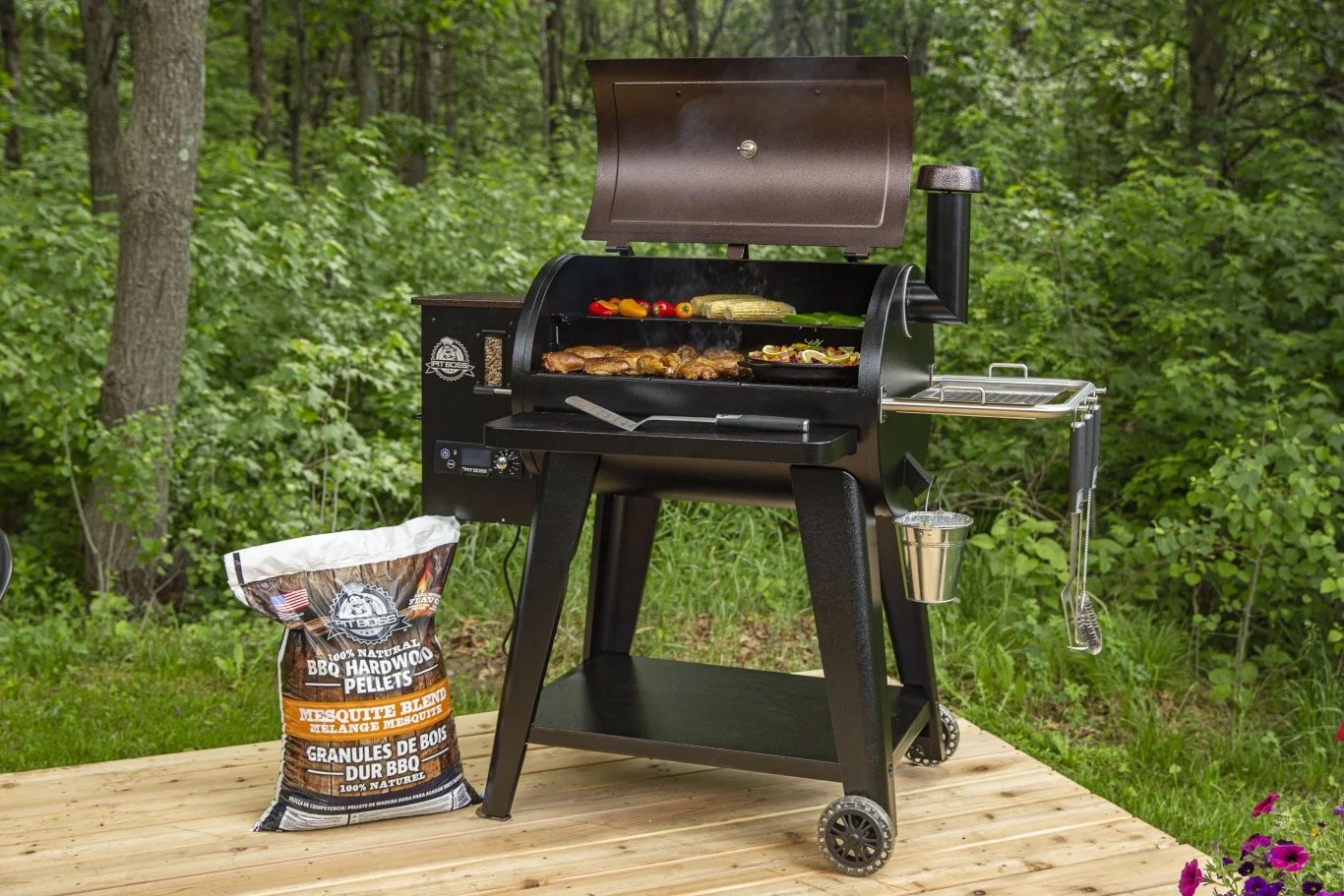

Articles
How Do Wood Pellet Grills Work
Modified: October 28, 2024
Discover how wood pellet grills work and why they are gaining popularity among BBQ enthusiasts. Read informative articles on various aspects of wood pellet grills.
(Many of the links in this article redirect to a specific reviewed product. Your purchase of these products through affiliate links helps to generate commission for Storables.com, at no extra cost. Learn more)
Introduction
Wood pellet grills have gained immense popularity in recent years as a versatile and easy-to-use option for outdoor cooking enthusiasts. These grills offer a unique and flavorful cooking experience, combining the convenience of a gas grill with the smoky taste of traditional charcoal grilling. In this article, we will take a closer look at how wood pellet grills work and what sets them apart from other types of grills.
Wood pellet grills, also known as pellet smokers, are a type of outdoor cooking appliance that utilizes wood pellets as the primary source of fuel. They are designed to provide a precise temperature control and consistent heat distribution, making them ideal for various cooking techniques such as grilling, smoking, baking, and roasting.
Unlike traditional charcoal grills that require manual ignition and constant monitoring of the fire, wood pellet grills offer an automated cooking process that takes the guesswork out of achieving the perfect temperature and smoke level. With their user-friendly features and versatility, wood pellet grills have become a favorite among both amateur home cooks and professional chefs.
So, how do wood pellet grills work? Let’s dive into the components and working mechanism of these innovative grills.
Key Takeaways:
- Wood pellet grills offer precise temperature control, even heat distribution, and versatile cooking methods, making them a popular choice for outdoor cooking enthusiasts seeking convenience and flavorful results.
- While wood pellet grills come with considerations such as cost and pellet availability, their ability to infuse food with smoky flavors and deliver consistent cooking results makes them a valuable addition to any outdoor cooking arsenal.
Read more: How Pellet Grills Work
Overview of Wood Pellet Grills
Wood pellet grills are a type of smoker-grill hybrid that combines the convenience of a gas grill with the rich flavors of wood-fired cooking. They operate by burning specially designed wood pellets made from compressed sawdust, which provide a consistent and clean-burning fuel source.
One of the distinguishing features of wood pellet grills is their ability to maintain precise temperature control. This is achieved through the use of a digital controller that regulates the flow of pellets to the firepot, controlling both the temperature and the amount of smoke produced. With this level of control, users can easily set their desired cooking temperature and let the grill do the rest.
Wood pellet grills come in various sizes, from portable options for camping and tailgating to larger models suitable for backyard cookouts and gatherings. They typically consist of a hopper to hold the wood pellets, a digital controller for temperature regulation, a firepot or combustion area, and a cooking chamber with grates or racks for food placement.
These grills are designed to offer versatility in cooking methods, allowing users to grill, smoke, bake, roast, and even sear their food. The wood pellets used in these grills come in different flavors such as hickory, mesquite, applewood, and cherry, providing a wide range of options to enhance the taste and aroma of the grilled food.
Wood pellet grills also offer convenience and ease of use. Many models have features like an automatic ignition system, which eliminates the need for manual lighting, and a temperature control system that ensures consistent heat throughout the cooking process. Some advanced models even have Wi-Fi connectivity, allowing users to monitor and control the grill remotely through a smartphone app.
Overall, wood pellet grills offer a unique combination of convenience, versatility, and flavor that sets them apart from other types of grills. Whether you’re a seasoned grilling enthusiast or a beginner looking to explore the world of outdoor cooking, a wood pellet grill can be a valuable addition to your culinary arsenal.
Components of a Wood Pellet Grill
A wood pellet grill consists of several key components that work together to create an efficient and enjoyable cooking experience. Understanding these components can help you make informed decisions when choosing a wood pellet grill and provide a better understanding of how they function.
1. Hopper: The hopper is the storage container located at the back of the grill that holds the wood pellets. It is designed to feed the pellets into the grill’s combustion system automatically. The capacity of the hopper varies depending on the grill model and can range from a few pounds to over 40 pounds of pellets.
2. Auger System: The auger system, also known as the feed mechanism, is responsible for delivering the wood pellets from the hopper to the firepot. It consists of a motor-driven screw-like device that rotates to move the pellets through a chute and into the firepot. The speed and direction of the auger can be controlled by the grill’s digital controller to adjust the temperature and regulate the rate of pellet combustion.
3. Firepot: The firepot is where the combustion of the wood pellets takes place. It is a small, metal container located at the bottom of the grill. As the pellets are fed into the firepot, they come into contact with an igniter rod or hot rod, which ignites them to create a controlled flame. The design of the firepot ensures efficient and consistent pellet combustion throughout the cooking process.
4. Digital Controller: The digital controller is the brain of the wood pellet grill. It allows users to set and monitor the cooking temperature with precision. The controller usually features a digital display where the temperature can be adjusted, as well as additional settings for timers, smoke levels, and other features. It communicates with the hopper and auger system to maintain the desired temperature throughout the cooking process.
5. Cooking Chamber: The cooking chamber is the main area where the food is placed for grilling or smoking. It is usually enclosed by a lid with a built-in thermometer to monitor the internal temperature. The cooking chamber can have multiple grates or racks, allowing for cooking different types of food simultaneously or creating different cooking zones for various temperature requirements.
6. Drip Tray: The drip tray is a removable metal tray located beneath the cooking grates. It collects any drippings or grease that may fall from the food during the cooking process. This not only helps keep the grill clean but also prevents flare-ups and reduces the risk of charring the food.
7. Ash Cleanout System: Some wood pellet grills are equipped with an ash cleanout system, which simplifies the process of removing the ash generated during pellet combustion. This feature typically includes a removable tray or access door at the bottom of the grill, allowing for quick and easy disposal of the ash.
Understanding the components of a wood pellet grill will help you operate and maintain it properly, ensuring optimal performance and longevity. Each component plays a crucial role in delivering consistent heat, precise temperature control, and flavorful results.
Working Mechanism of Wood Pellet Grills
Wood pellet grills operate on a straightforward and efficient mechanism that allows for consistent heat and temperature control. Understanding how these grills work will help you make the most out of your cooking experience and achieve delicious results.
1. Ignition and Startup Process: To start the wood pellet grill, you simply need to turn it on and set the desired temperature using the digital controller. The grill’s igniter rod or hot rod will then ignite the wood pellets in the firepot, creating a flame. Some grills have a startup mode that helps preheat the firepot and bring it to the desired temperature quickly.
2. Temperature Control and Regulation: The key to the wood pellet grill’s efficiency lies in its ability to maintain an even and consistent temperature. The digital controller continuously monitors the temperature inside the grill and adjusts the rate at which the wood pellets are fed into the firepot. If the temperature drops, the controller increases the pellet feed rate, and if it rises too high, it decreases the feed rate, ensuring precise temperature control throughout the cooking process.
3. Pellet Feeding and Combustion: The wood pellets stored in the hopper are fed into the combustion system by the auger system. As the pellets are delivered to the firepot, they come into contact with the flame generated by the igniter rod. The heat from the flame activates the release of natural oils within the wood pellets, which then vaporize and produce flavorful smoke. The smoke circulates around the food, infusing it with a distinct smoky flavor.
4. Cooking Process on a Wood Pellet Grill: Once the grill has reached the desired temperature, you can place your food on the cooking grates or racks in the cooking chamber. The grill’s heat distribution system ensures that the heat is evenly distributed, allowing for consistent cooking results. The smoke produced by the burning wood pellets adds a delicious smoky flavor to the food, enhancing its taste and aroma.
5. Advantages of Wood Pellet Grills: Wood pellet grills offer several advantages over other types of grills. First, they provide a wide temperature range, allowing for precise control and versatility in cooking methods. They also produce a consistent and even heat, avoiding hot spots and temperature fluctuations. Additionally, the use of wood pellets imparts a unique smoky flavor to the food, enhancing the taste and aroma. Finally, their automation and convenience make them easy to use, even for beginners.
Understanding the working mechanism of wood pellet grills will enable you to make the most out of these versatile cooking appliances. With their precise temperature control and smoke-infused cooking capabilities, wood pellet grills offer a unique and flavorful outdoor cooking experience.
Ignition and Startup Process
The ignition and startup process of a wood pellet grill is designed to be simple and user-friendly. Whether you are a beginner or an experienced griller, you can easily get your grill up and running in no time.
1. Preparing the Grill: Before starting the ignition process, it’s essential to ensure that your wood pellet grill is clean and free from any debris or leftover ashes from previous cooking sessions. This will help maintain optimal performance and prevent any unwanted flavors from transferring to your food. Additionally, make sure the hopper is filled with the appropriate amount of wood pellets for the cooking session.
2. Turning on the Grill: To start the ignition process, locate the power switch or button on your grill and turn it on. Some models may also require you to connect the grill to a power source if it is an electric-powered unit. Once the grill is powered up, you can set the desired cooking temperature using the digital controller.
3. Ignition Mechanism: Wood pellet grills are equipped with an igniter rod or hot rod, which is responsible for igniting the wood pellets. The igniter rod heats up to a high temperature, bringing the pellets in the firepot to their ignition point. This process typically takes a few minutes, and you may hear a slight clicking sound as the igniter rod heats up.
4. Preheating the Grill: Some wood pellet grills have a startup mode that helps preheat the grill and expedite the ignition process. This startup mode activates the fan and auger system, bringing the grill to the desired temperature quickly. It is recommended to follow the manufacturer’s instructions regarding the preheating process for your specific grill model.
5. Monitoring the Temperature: As the wood pellets ignite, you can monitor the temperature on the digital controller’s display. The digital controller continuously communicates with the firepot and auger system to maintain the desired temperature throughout the cooking process. You may need to make slight adjustments to the temperature settings until it reaches your desired level.
6. Ready to Cook: Once the grill has reached the desired temperature, you are ready to start cooking. You can place your food on the cooking grates or racks in the cooking chamber, close the lid, and let the wood pellet grill work its magic. The consistent heat and flavor-infusing smoke from the burning wood pellets will help create delicious and succulent dishes.
It’s important to note that the ignition and startup process may vary slightly depending on the specific model and brand of your wood pellet grill. Therefore, it’s always recommended to consult the user manual or follow the instructions provided by the manufacturer for your grill’s proper operation.
By following these steps, you can easily and safely ignite your wood pellet grill and get it ready for a memorable outdoor cooking experience.
Read more: How To Store Pellet Grill Pellets
Temperature Control and Regulation
One of the key features that sets wood pellet grills apart from other types of grills is their ability to maintain precise temperature control. This level of control allows for consistent and efficient cooking, making it easier to achieve perfectly cooked meals every time.
1. Digital Controller: The digital controller is the heart of the temperature control system in a wood pellet grill. It allows users to set and monitor the cooking temperature with precision. The controller features a digital display where you can adjust the temperature settings to your desired level. Some advanced models even have Wi-Fi connectivity, allowing you to monitor and control the grill remotely through a smartphone app.
2. Temperature Sensors: Wood pellet grills are equipped with temperature sensors that constantly monitor the internal temperature of the cooking chamber. These sensors relay the information to the digital controller, which then adjusts the grill’s settings accordingly. The temperature sensors ensure that the grill maintains the desired cooking temperature throughout the entire cooking process.
3. Auger System: The auger system in a wood pellet grill plays a crucial role in temperature control. The digital controller communicates with the auger system to regulate the rate at which the wood pellets are fed into the firepot. If the temperature drops below the set level, the controller increases the pellet feed rate to generate more heat. On the other hand, if the temperature rises too high, the controller decreases the feed rate to reduce the heat output.
4. Pellet Combustion: The combustion of wood pellets in a wood pellet grill is also closely tied to temperature control. The rate at which the pellets burn directly affects the amount of heat produced. The digital controller adjusts the feed rate and the amount of pellets delivered to the firepot to maintain a consistent burning rate, ensuring a steady temperature inside the grill.
5. Multiple Temperature Settings: Wood pellet grills offer a wide range of temperature settings to cater to different cooking methods and food requirements. You can typically set the grill to temperatures ranging from low and slow smoking temperatures (around 180°F) to high-heat grilling temperatures (up to 500°F or higher). The ability to set precise temperatures allows for versatile cooking, whether you’re slow-smoking a brisket for hours or searing a steak at a high heat.
6. Heat Distribution: Wood pellet grills are designed to distribute heat evenly throughout the cooking chamber. This helps eliminate any hot spots and ensures that food is cooked uniformly. The heat distribution system, combined with the precise temperature control, plays a vital role in achieving consistent and delicious results.
With the precise temperature control and regulation capabilities of wood pellet grills, you can focus on preparing the perfect meal without worrying about temperature fluctuations. Whether you’re smoking, grilling, baking, or roasting, the ability to maintain a consistent temperature ensures that your food is cooked to perfection every time.
Wood pellet grills work by using electricity to ignite wood pellets, which then burn and create heat and smoke for cooking. The temperature is controlled by adjusting the rate at which pellets are fed into the fire.
Pellet Feeding and Combustion
Pellet feeding and combustion are crucial processes in the operation of a wood pellet grill. These processes ensure a steady fuel supply and efficient burning of the wood pellets, resulting in consistent heat and smoke production for optimal cooking results.
1. Auger System: The auger system is responsible for feeding the wood pellets from the hopper to the firepot. The auger, a motor-driven screw-like device, rotates and moves the pellets through a chute, delivering them to the firepot in a controlled manner. The speed and direction of the auger are regulated by the digital controller, which adjusts the feed rate according to the desired temperature and cooking settings.
2. Hopper: The hopper is the storage container located at the back of the wood pellet grill. It holds the wood pellets that will be fed into the firepot. The hopper capacity varies depending on the grill model, but it can typically hold several pounds of pellets, allowing for hours of uninterrupted cooking time.
3. Pellet Ignition: As the wood pellets are fed into the firepot, they come into contact with the igniter rod or hot rod. These rods are heated to a high temperature, allowing them to ignite the pellets and start the combustion process. Once ignited, the pellets begin to burn, releasing heat and smoke to create the desired cooking environment.
4. Combustion Process: The wood pellets in the firepot undergo a controlled combustion process. As the pellets burn, they convert into heat and produce flavorful smoke. The burning process is regulated by the digital controller, which adjusts the feed rate of the pellets based on the desired temperature. If the temperature drops, the controller increases the pellet feed rate to generate more heat, and if the temperature rises too high, it decreases the feed rate to reduce the heat output.
5. Smoke Production: The combustion of the wood pellets in a wood pellet grill generates aromatic smoke, which enhances the flavor of the food being cooked. The heat from the burning pellets causes the release of the natural oils and flavors locked within the wood, infusing the food with a distinct smoky taste. The amount of smoke produced can also be controlled by adjusting the settings on the digital controller, allowing you to achieve the desired level of smokiness.
6. Ash Cleanup: As the wood pellets burn, they produce a small amount of ash. Some wood pellet grills are equipped with an ash cleanout system, which simplifies the process of removing the ashes. This system typically includes a removable tray or access door at the bottom of the grill, allowing for quick and easy disposal of the ash, ensuring the efficient operation of the grill.
Pellet feeding and combustion are crucial elements in the operation of a wood pellet grill. By effectively controlling the feed rate and combustion process, wood pellet grills provide consistent heat, smoke production, and flavor for an exceptional grilling experience.
Cooking Process on a Wood Pellet Grill
The cooking process on a wood pellet grill offers a unique and flavorful outdoor cooking experience. Whether you’re grilling, smoking, baking, roasting, or even searing, a wood pellet grill provides versatility and excellent heat control for delicious results.
1. Preheating: Before placing your food on the grill, it’s important to preheat the wood pellet grill to the desired cooking temperature. This ensures that the grill is at the ideal temperature when you start cooking, allowing for even heat distribution and consistent results.
2. Placement of Food: Once the grill is preheated, you can place your food on the cooking grates or racks in the cooking chamber. The cooking chamber is typically spacious, allowing you to cook multiple items at once or create different cooking zones with varying temperatures.
3. Heat and Smoke Infusion: As you close the lid of the wood pellet grill, the heat and smoke from the burning wood pellets envelop your food, infusing it with a delicious smoky flavor. The wood pellets provide a natural and aromatic smoke that enhances the taste and aroma of the food, creating a distinct outdoor barbecue experience.
4. Temperature Monitoring: Throughout the cooking process, it’s important to monitor the temperature of the grill to ensure that it remains at the desired level. The digital controller allows you to adjust the temperature settings as needed, maintaining precise control over the cooking environment.
5. Grill Adjustments: Depending on the specific recipe and desired cooking outcome, you may need to make occasional adjustments to the grill settings. For example, if you want to achieve a sear on your steak, you can open the grill’s vents or remove the drip tray to expose the food to direct heat. Alternatively, if you’re slow-smoking a pork shoulder, you may need to lower the temperature and increase the cooking time.
6. Cooking Time: The cooking time on a wood pellet grill may vary depending on the type of food and the desired level of doneness. It’s important to follow recipe guidelines and use a meat thermometer to ensure that your food is cooked to the proper internal temperature. The consistent heat and smoke production of the wood pellet grill help achieve even and thorough cooking, resulting in succulent and flavorful dishes.
7. Resting Period: After your food is cooked to perfection, it’s recommended to let it rest before serving. This allows the juices to redistribute within the meat, enhancing its tenderness and juiciness. It’s best to tent the food loosely with foil during the resting period to retain its warmth.
8. Cleaning and Maintenance: Once you’ve finished cooking and enjoying your meal, proper cleaning and maintenance of your wood pellet grill are essential. Remove any food residues from the cooking grates, clean the drip tray, ash cleanout system, and ensure that all components are free from debris. Regular cleaning and maintenance will prolong the lifespan of your grill and ensure optimal performance for future cooking sessions.
The cooking process on a wood pellet grill offers the perfect balance of convenience, versatility, and delicious results. From traditional BBQ favorites to creative culinary experiments, a wood pellet grill elevates your outdoor cooking experience to a whole new level.
Advantages of Wood Pellet Grills
Wood pellet grills offer numerous advantages that set them apart from other types of grills. From their convenience to the unique flavors they impart, these grills have gained significant popularity among outdoor cooking enthusiasts. Let’s explore some of the advantages that make wood pellet grills a top choice for many:
- Precise Temperature Control: Wood pellet grills are equipped with digital controllers that allow for precise temperature control. This means you can easily set and maintain your desired cooking temperature, eliminating the need for constant monitoring and adjustments.
- Even Heat Distribution: Wood pellet grills are designed to distribute heat evenly throughout the cooking chamber. This ensures that food is cooked consistently, with no hot or cold spots. The result is perfectly cooked meals with even browning and juicy, flavorful results.
- Versatility: Wood pellet grills are incredibly versatile cooking appliances. They can be used for various cooking techniques, including grilling, smoking, baking, roasting, and even searing. This versatility allows you to experiment with a wide range of recipes and flavors, making your outdoor cooking experience all the more exciting.
- Flavorful Smoky Taste: The use of wood pellets in these grills imparts a distinct smoky flavor to your food. The type of wood pellets you choose, such as hickory, mesquite, or applewood, can add unique and delicious flavors to your grilled dishes, enhancing the taste and aroma of the food in a way that other grills cannot replicate.
- Convenience and Ease of Use: Wood pellet grills offer a user-friendly experience, making outdoor cooking hassle-free. Many models have features like automatic ignition and precise temperature control, allowing you to set the grill and let it do the work for you. Additionally, some advanced models offer Wi-Fi connectivity for remote monitoring and control.
- Clean and Efficient: Wood pellet grills burn wood pellets made from compressed sawdust, resulting in a clean-burning fuel source. The pellets are highly efficient, producing a high heat output with minimal ash residue. Some models even have ash cleanout systems, making clean-up a breeze.
- Wide Temperature Range: Wood pellet grills offer a wide temperature range, allowing you to cook low and slow at temperatures as low as 180°F for delicate smoking, or crank up the heat to over 500°F for high-temperature grilling and searing. This flexibility enables you to cook a variety of dishes without needing multiple cooking appliances.
- Consistent Results: With precise temperature control and even heat distribution, wood pellet grills deliver consistent cooking results every time. This reliability is especially appreciated by those who take their outdoor cooking seriously and want to achieve the perfect doneness and flavor in their grilled creations.
Overall, wood pellet grills offer a multitude of advantages that make them a popular choice among outdoor cooking enthusiasts. From their precise temperature control to the unique smoky flavors they infuse into food, these grills provide a convenient and flavorful way to elevate your outdoor cooking experience.
Read more: How Do Traeger Grills Work
Limitations and Considerations
While wood pellet grills have many advantages, it’s important to be aware of their limitations and considerations before making a purchase. Understanding these factors will help you make an informed decision and ensure that a wood pellet grill is the right fit for your specific needs and preferences. Let’s explore some of the limitations and considerations associated with wood pellet grills:
- Cost: Wood pellet grills can be more expensive than other types of grills such as charcoal or gas grills. The initial cost of the grill itself, as well as the ongoing expense of purchasing wood pellets, should be taken into account when considering a wood pellet grill. However, many enthusiasts believe that the exceptional flavor and convenience of wood pellet grills justify the investment.
- Dependence on Electricity: Wood pellet grills require electricity to operate, as they rely on electric components to power the auger system and maintain temperature control. This means that you must have access to a power source or ensure that you have a generator available in case of power outages.
- Pellet Availability: Wood pellets used as fuel in these grills may not be as readily available as other types of grilling fuels. Depending on your location, you may have limited options for purchasing wood pellets, which could affect your convenience and cost. It’s essential to ensure a reliable supply of wood pellets if you plan to use your wood pellet grill frequently.
- Learning Curve: While wood pellet grills are relatively user-friendly, there is still a learning curve involved, especially for beginners. Understanding the functions and settings of the digital controller, as well as the nuances of temperature control and smoke production, may require some practice and experimentation to achieve the desired results.
- Cooking Space: The cooking space of wood pellet grills may vary depending on the model. Some smaller models may have limited cooking capacity, which could be a consideration if you often cook for larger groups or have specific cooking requirements. Ensure that the grill you choose accommodates your intended cooking needs.
- Outdoor Use Only: Wood pellet grills are designed for outdoor use. While this is suitable for most grilling and smoking activities, it means that using a wood pellet grill may not be convenient during inclement weather or in environments where outdoor cooking is restricted.
- Maintenance and Cleaning: Like any grill, wood pellet grills require regular cleaning and maintenance to ensure proper functionality and longevity. Cleaning the cooking grates, removing ash, and occasionally inspecting and cleaning the components will help keep your grill in optimal condition.
By considering these limitations and factors, you can make an informed decision about whether a wood pellet grill aligns with your cooking style, budget, and practical needs. The unique flavors, convenience, and precise temperature control offered by wood pellet grills make them a popular choice for many outdoor cooking enthusiasts, but it’s important to assess your individual circumstances before making a final decision.
Conclusion
Wood pellet grills have revolutionized the way we approach outdoor cooking, offering a unique combination of convenience, versatility, and delicious flavors. With their precise temperature control, even heat distribution, and the use of wood pellets for smoky flavor infusion, these grills have become a favorite among grilling enthusiasts and professional chefs alike.
Throughout this article, we have explored the various aspects of wood pellet grills, from their components and working mechanism to the ignition process and temperature control. We have also highlighted the advantages they offer, such as precise temperature control, even heat distribution, versatility in cooking methods, and the distinct smoky flavors they impart to the food.
While wood pellet grills come with limitations and considerations, such as cost, dependence on electricity, and the availability of wood pellets, the overall benefits far outweigh these factors for many outdoor cooking enthusiasts. The ability to achieve consistent and flavorful results, along with the convenience and ease of use provided by these grills, make them an attractive option.
Whether you’re grilling steaks, smoking briskets, baking pizzas, or roasting vegetables, a wood pellet grill opens up a world of culinary possibilities. The precise temperature control allows for versatile cooking, while the smoky flavors of the wood pellets add a unique touch to your dishes.
As with any cooking appliance, it’s important to select a wood pellet grill that suits your cooking needs, budget, and available space. Consider factors like size, cooking capacity, ease of maintenance, and the availability of wood pellets in your area.
In conclusion, wood pellet grills provide a remarkable outdoor cooking experience for those who appreciate the art of grilling and smoking. With their precise temperature control, versatility, and the distinct smoky flavors they deliver, wood pellet grills have become a go-to choice for many outdoor cooking enthusiasts. So, fire up your wood pellet grill, gather your favorite ingredients, and get ready to impress your family and friends with mouthwatering meals cooked to perfection.
Frequently Asked Questions about How Do Wood Pellet Grills Work
Was this page helpful?
At Storables.com, we guarantee accurate and reliable information. Our content, validated by Expert Board Contributors, is crafted following stringent Editorial Policies. We're committed to providing you with well-researched, expert-backed insights for all your informational needs.
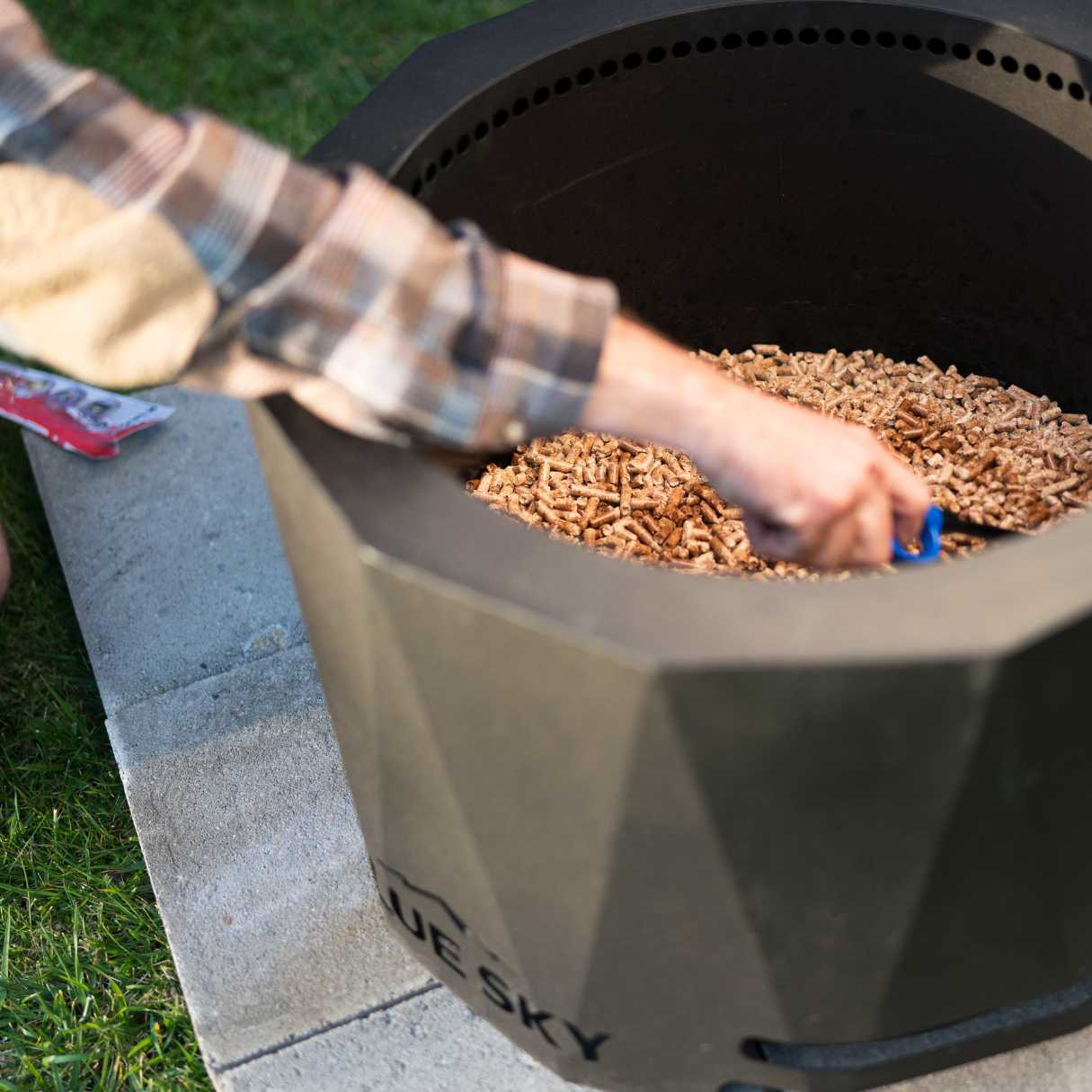
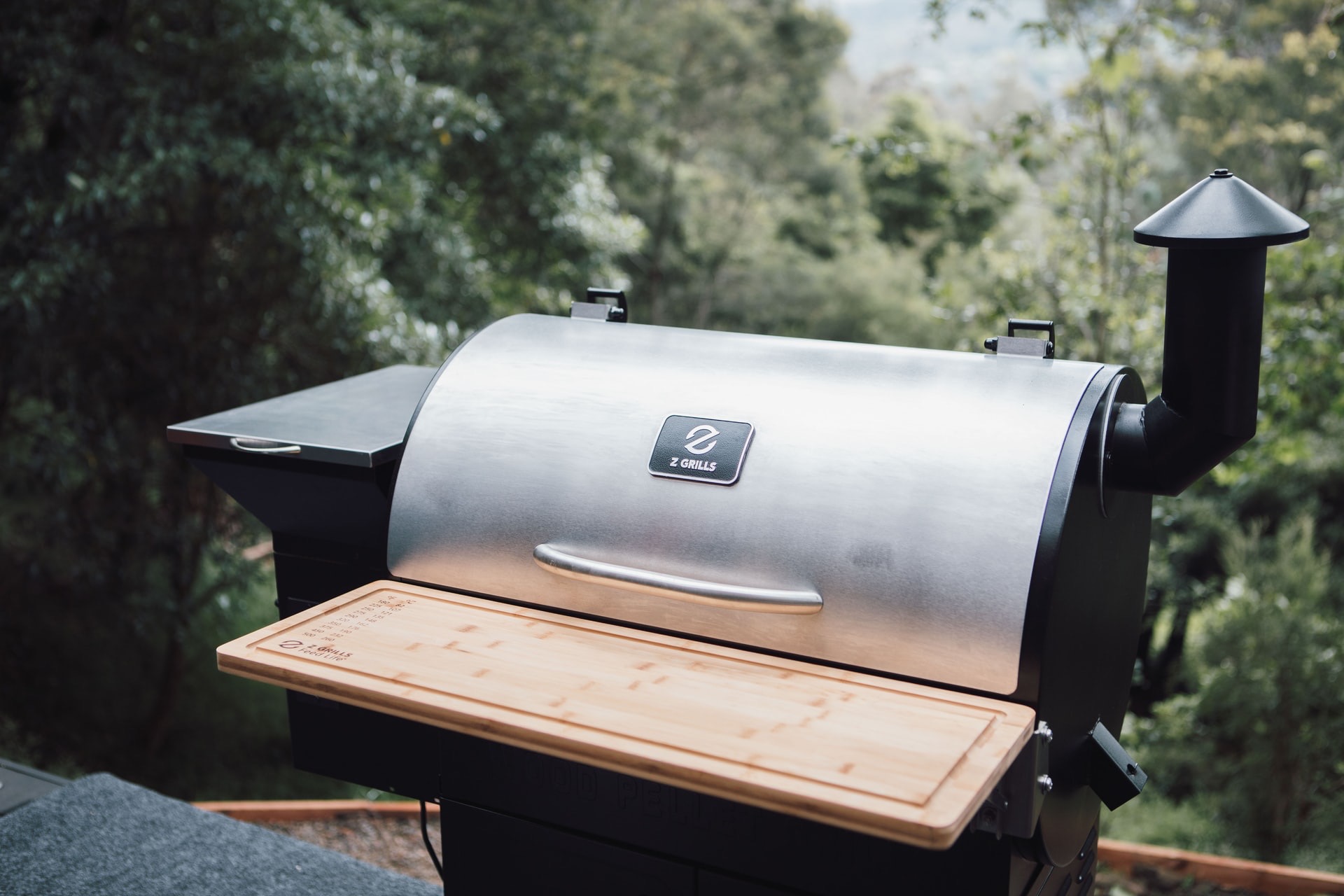
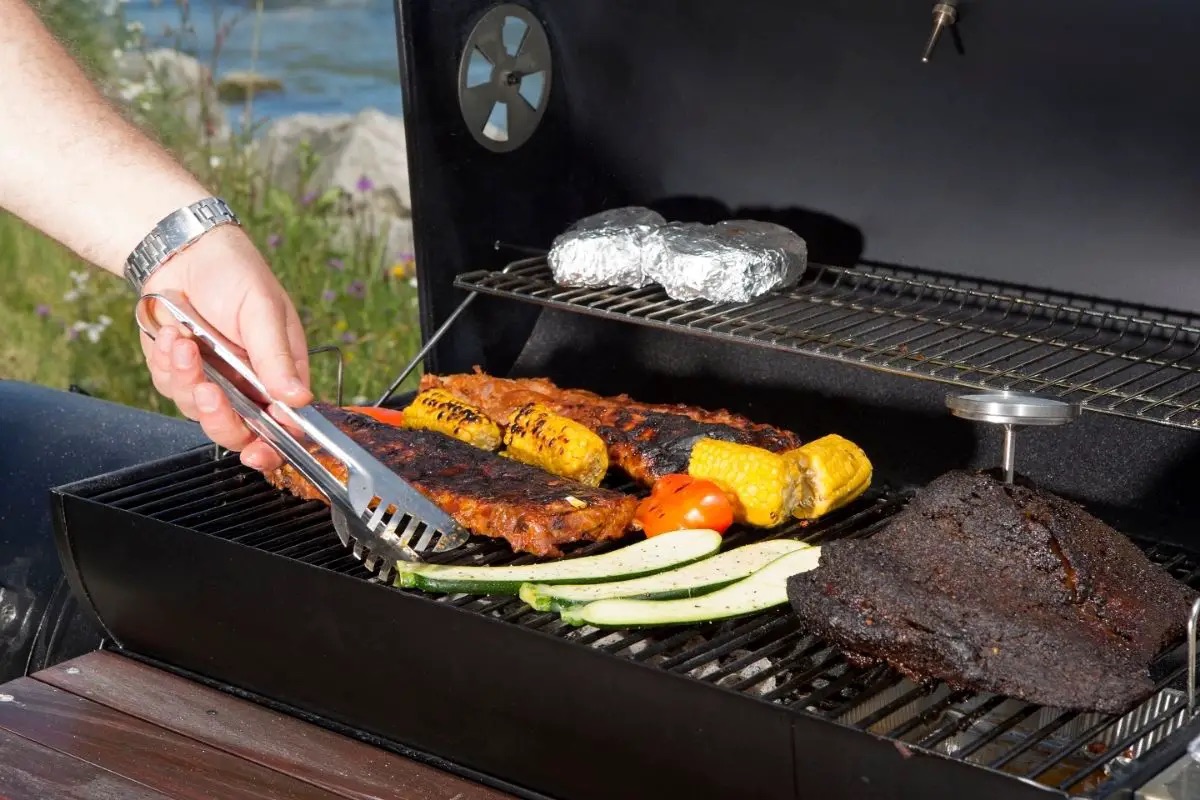
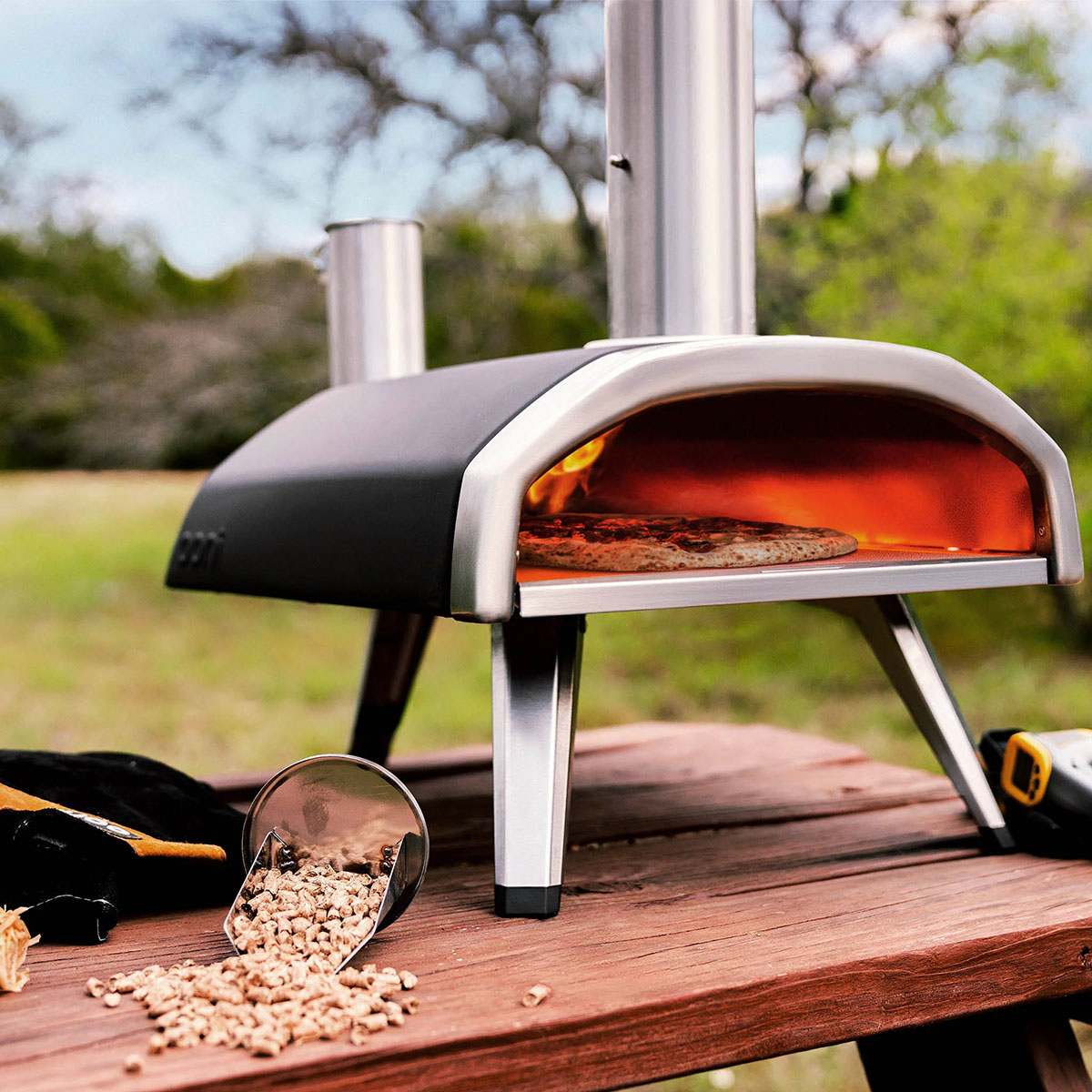
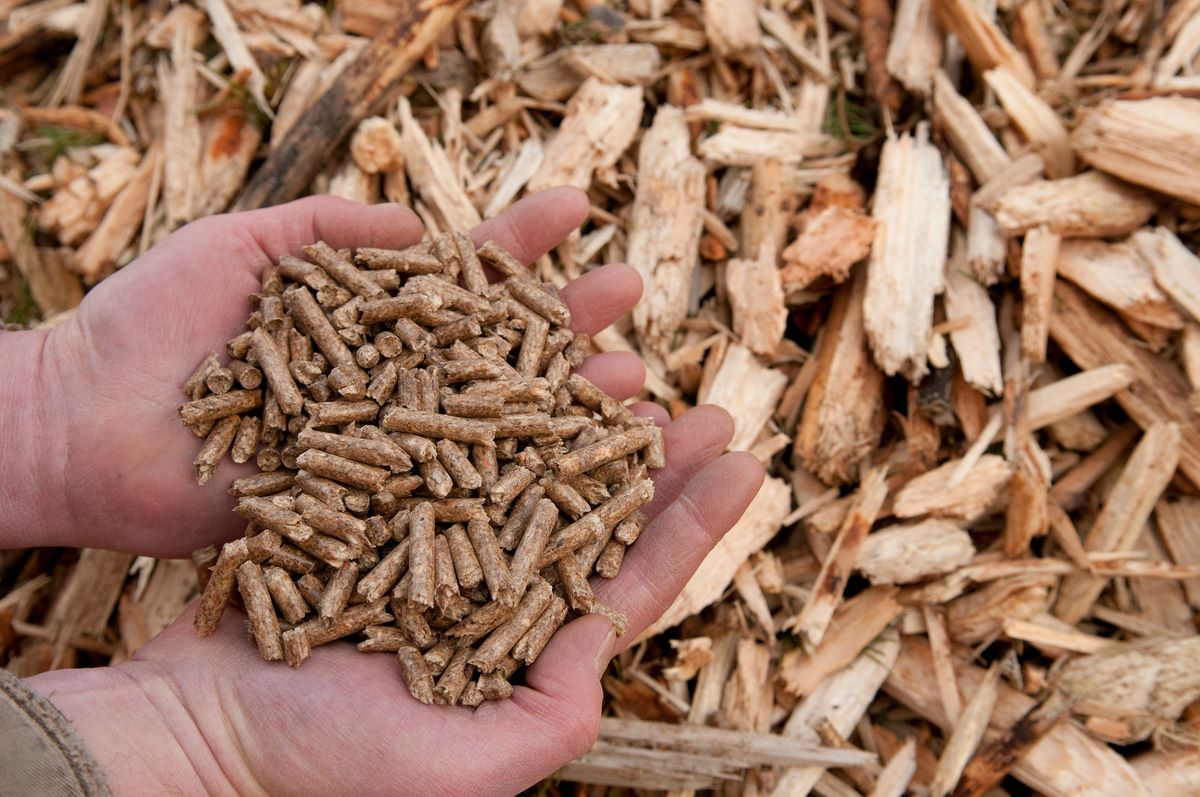
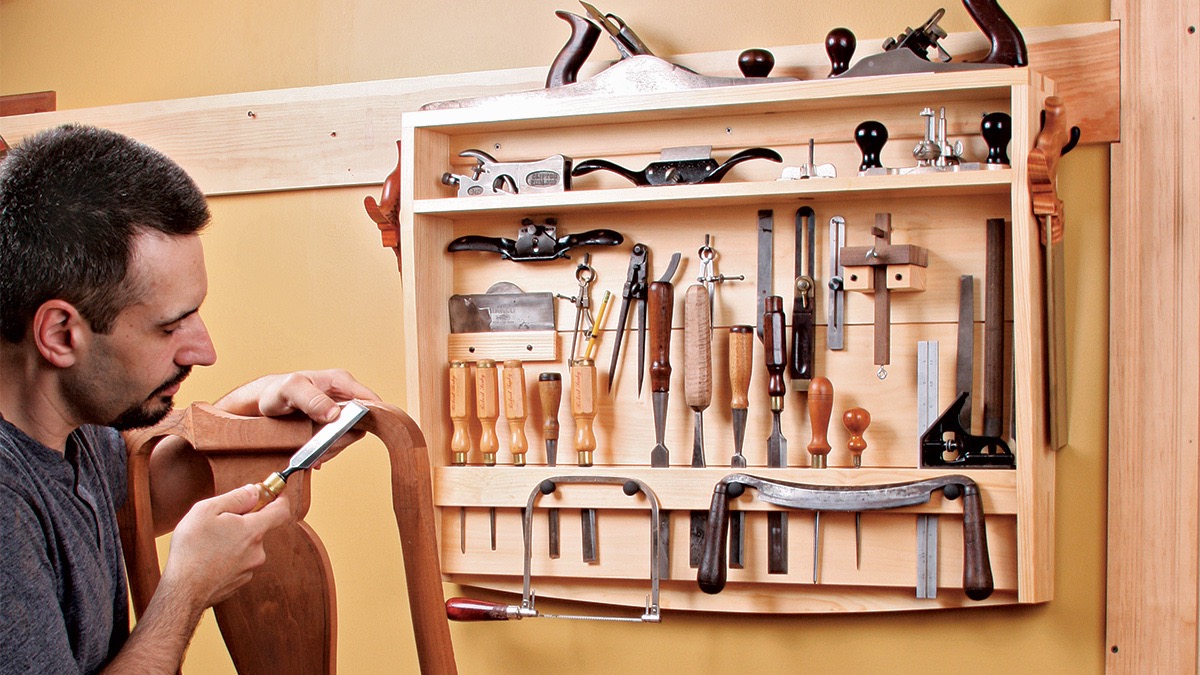
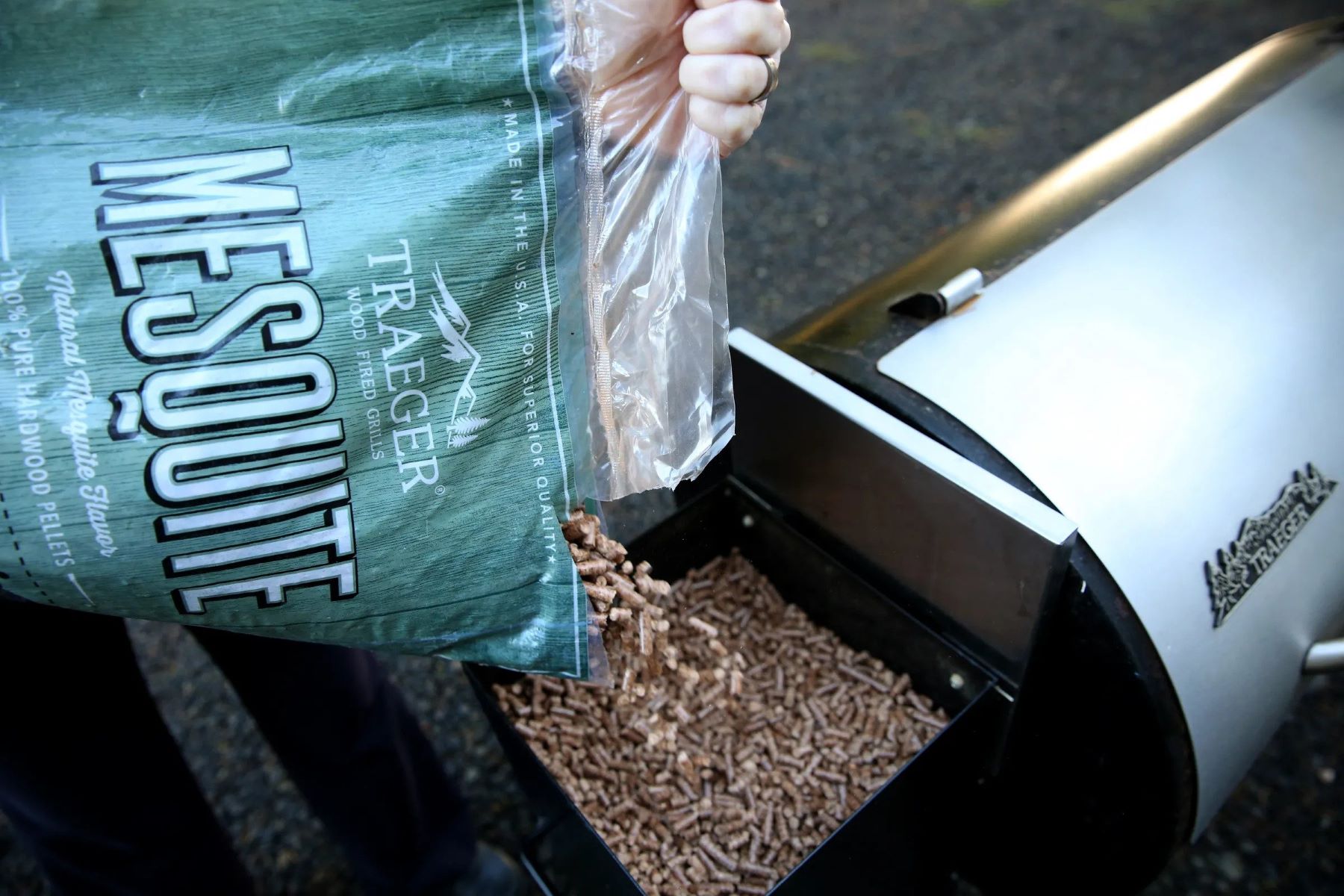
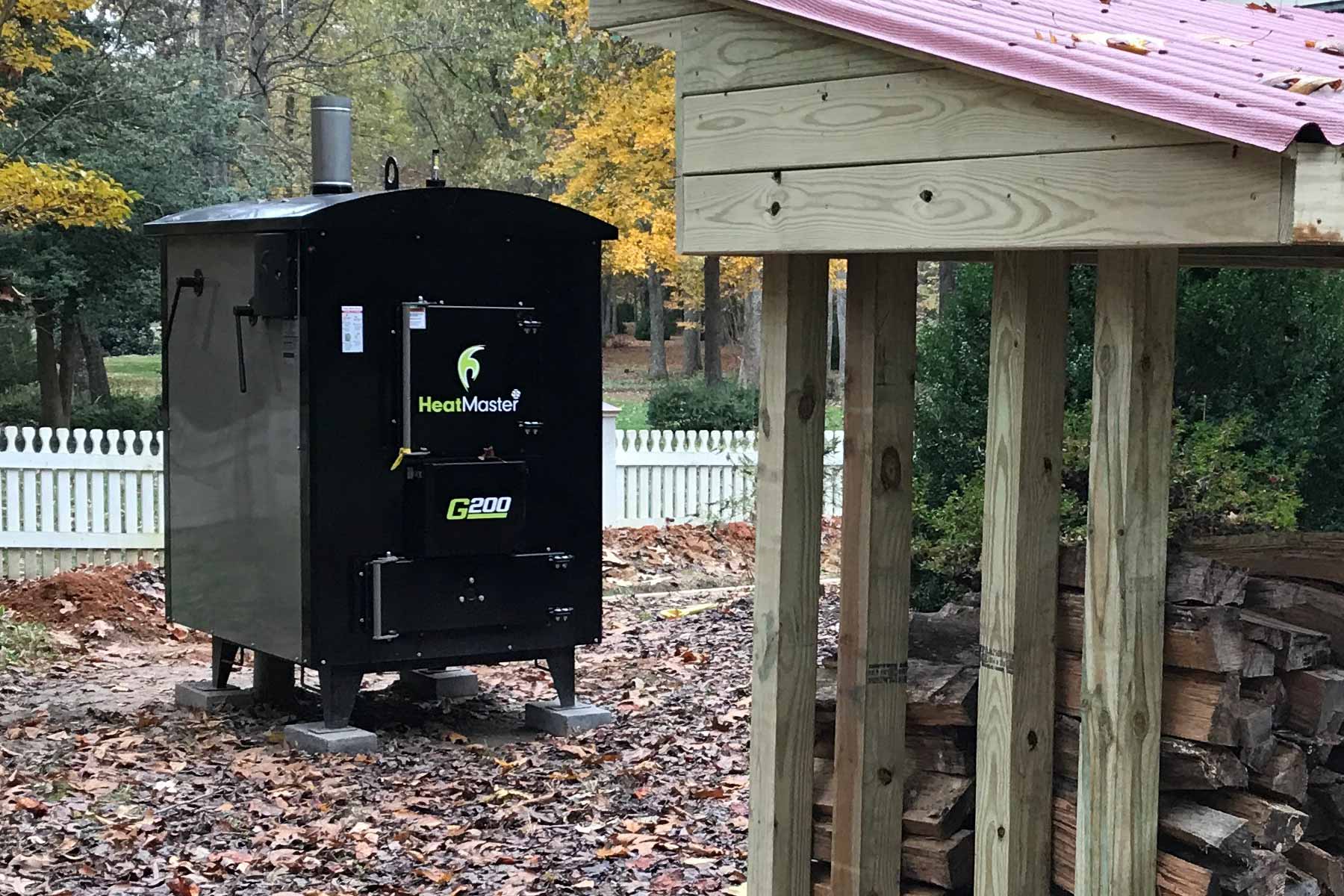
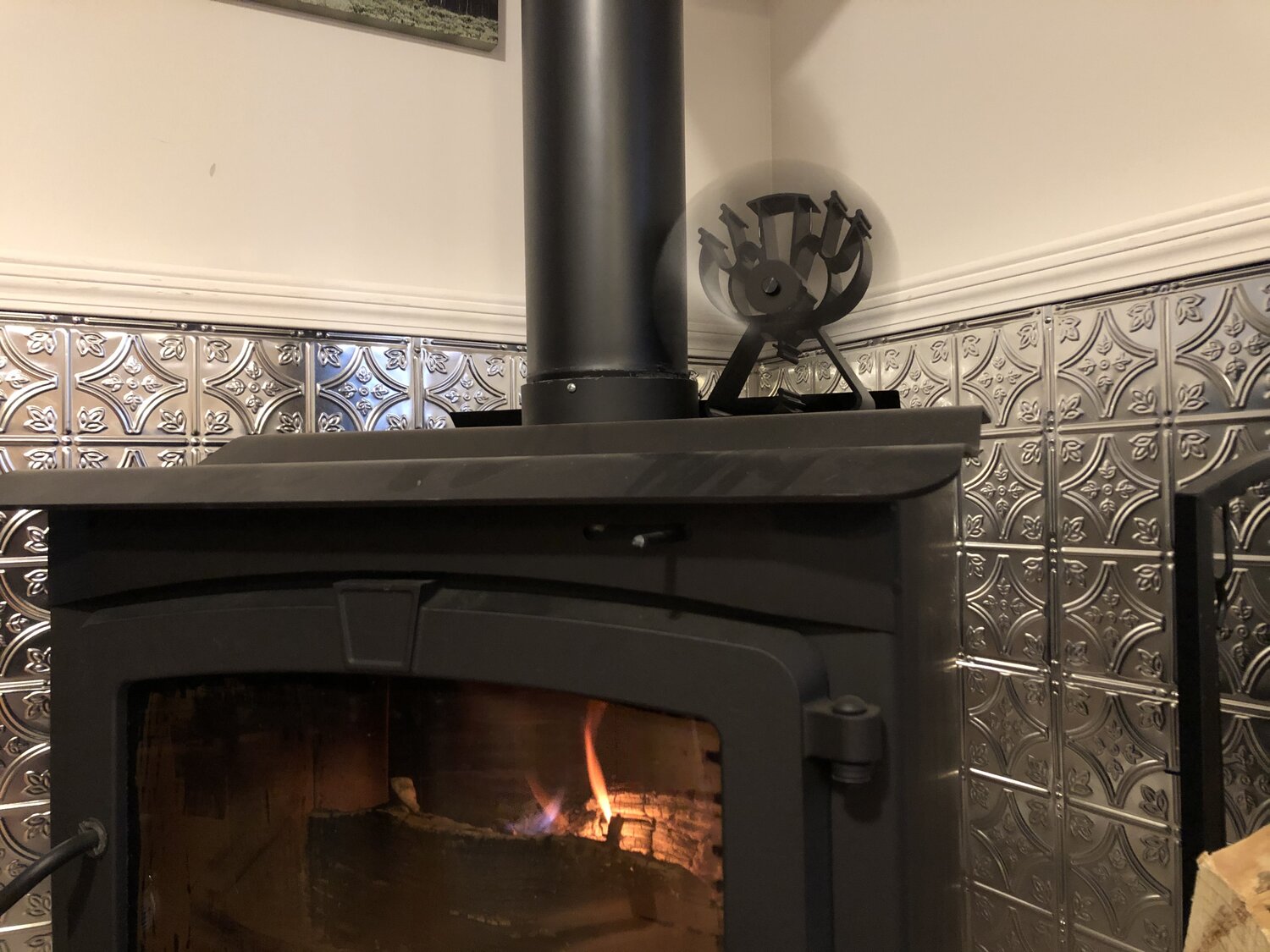
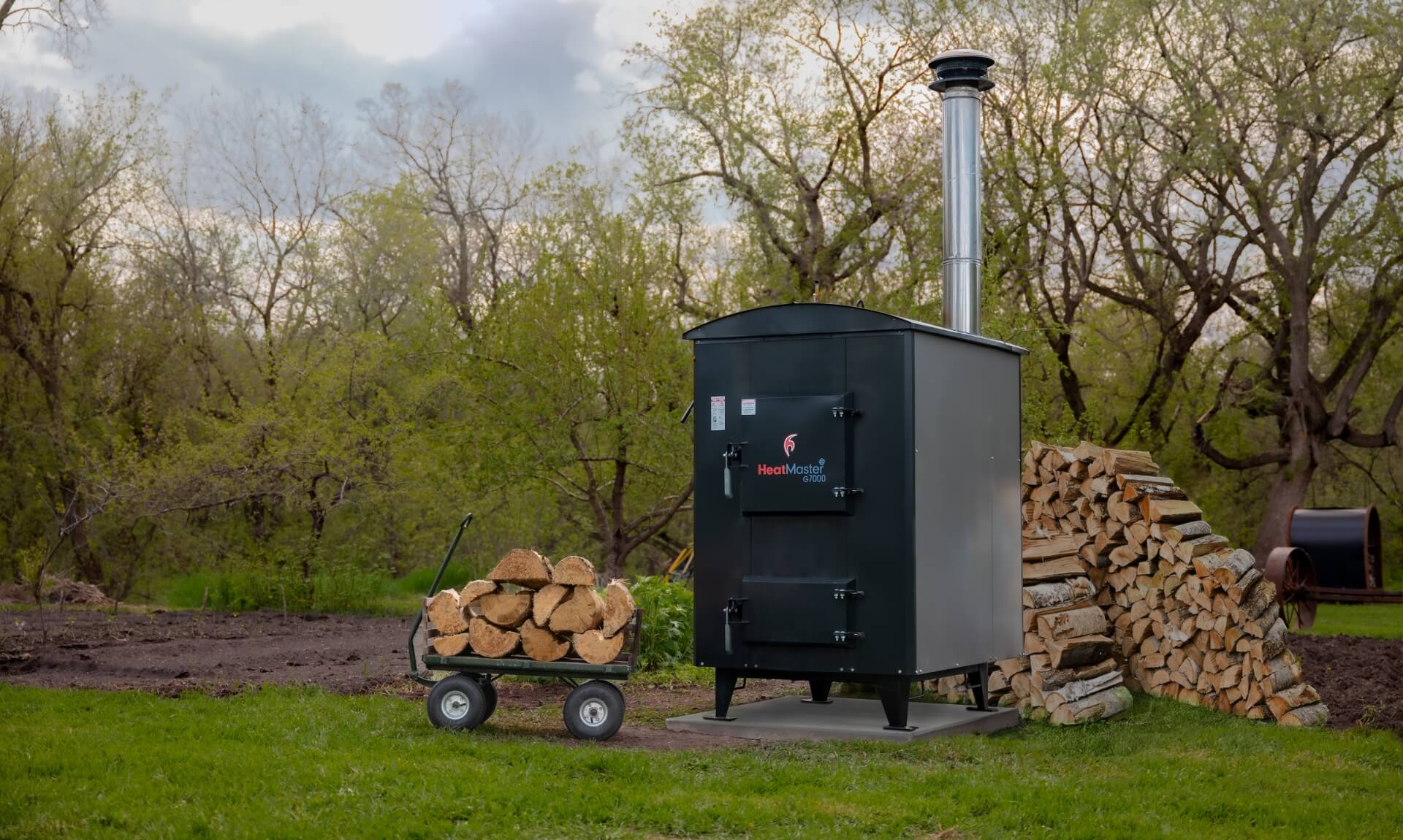
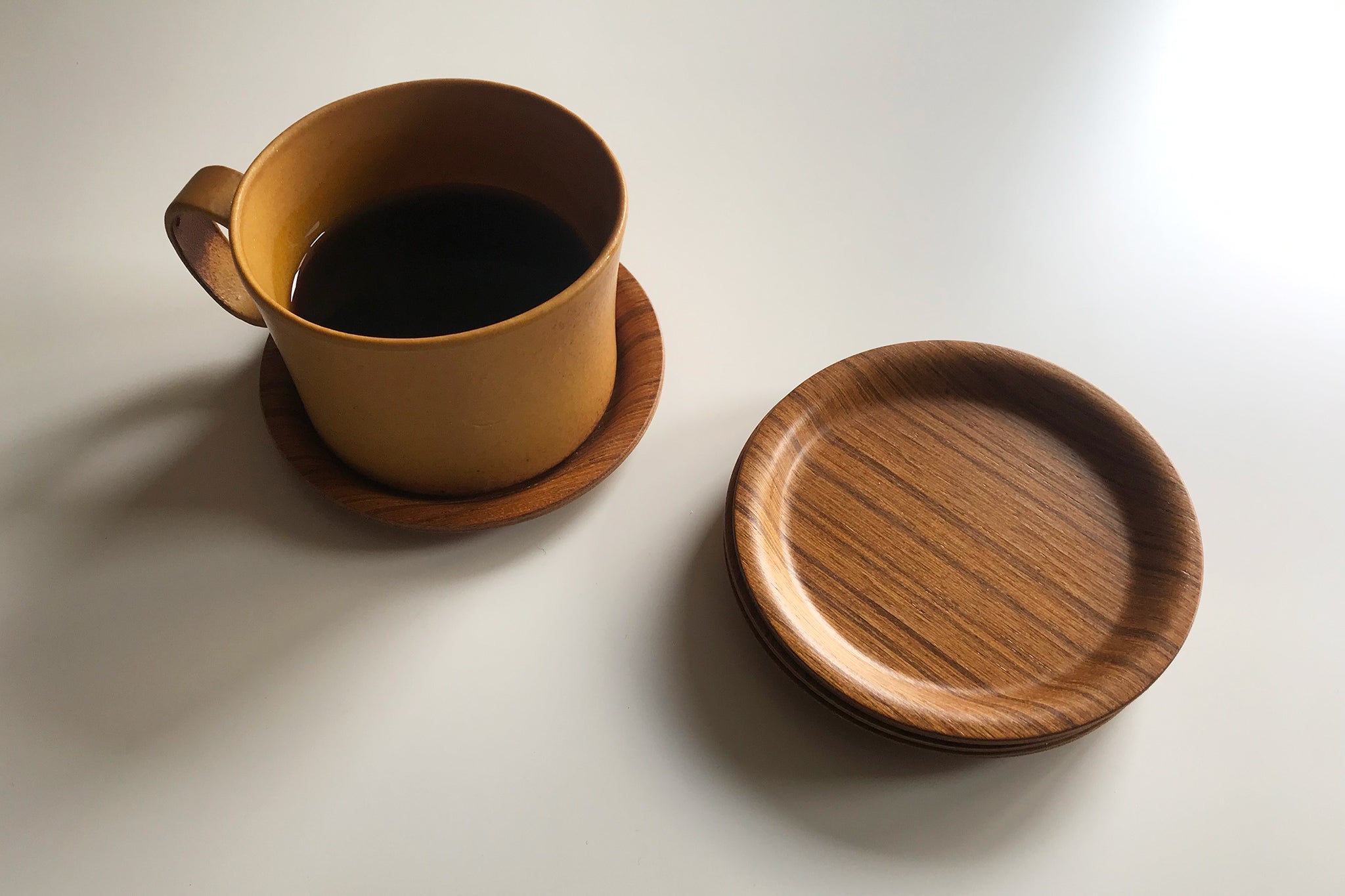
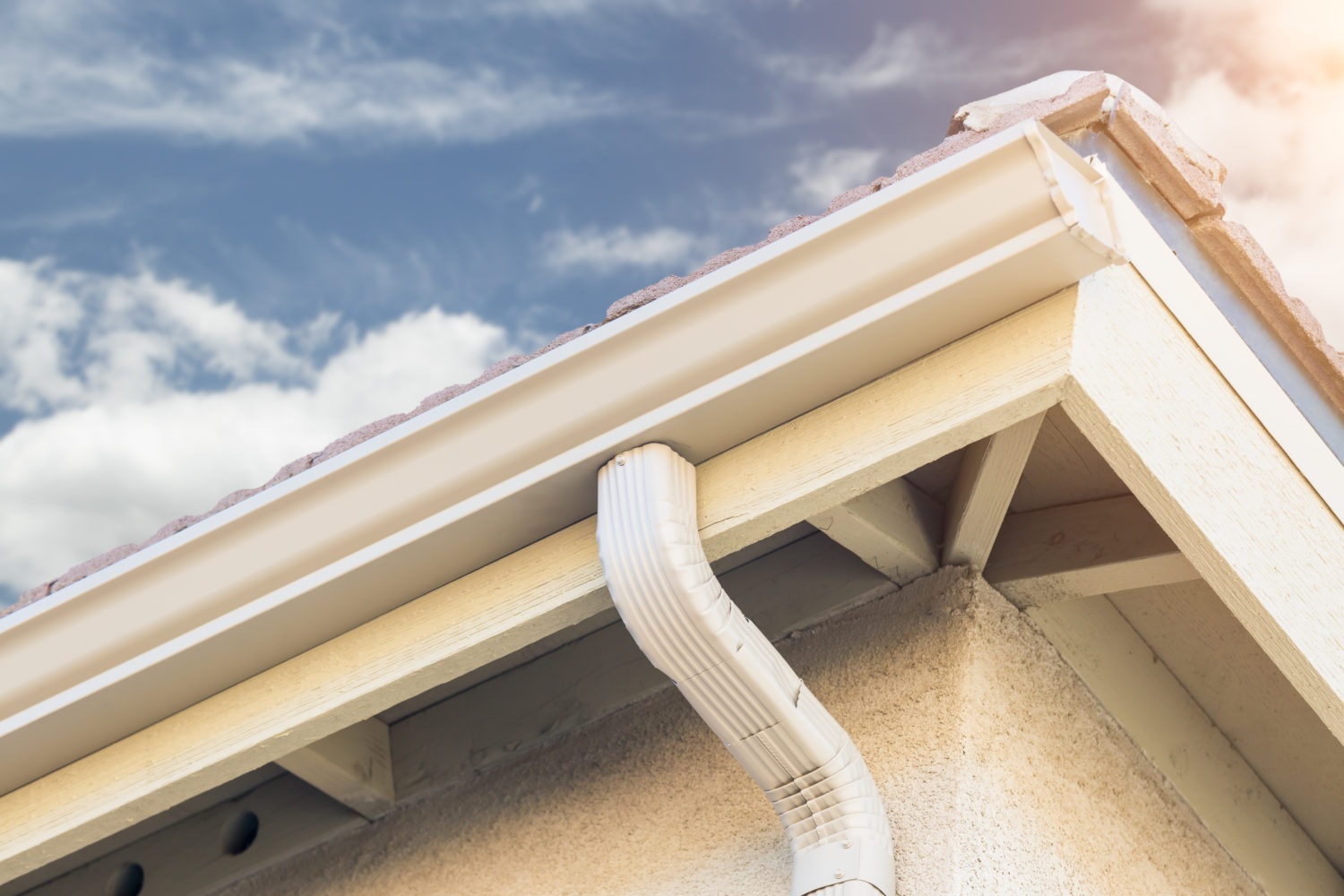
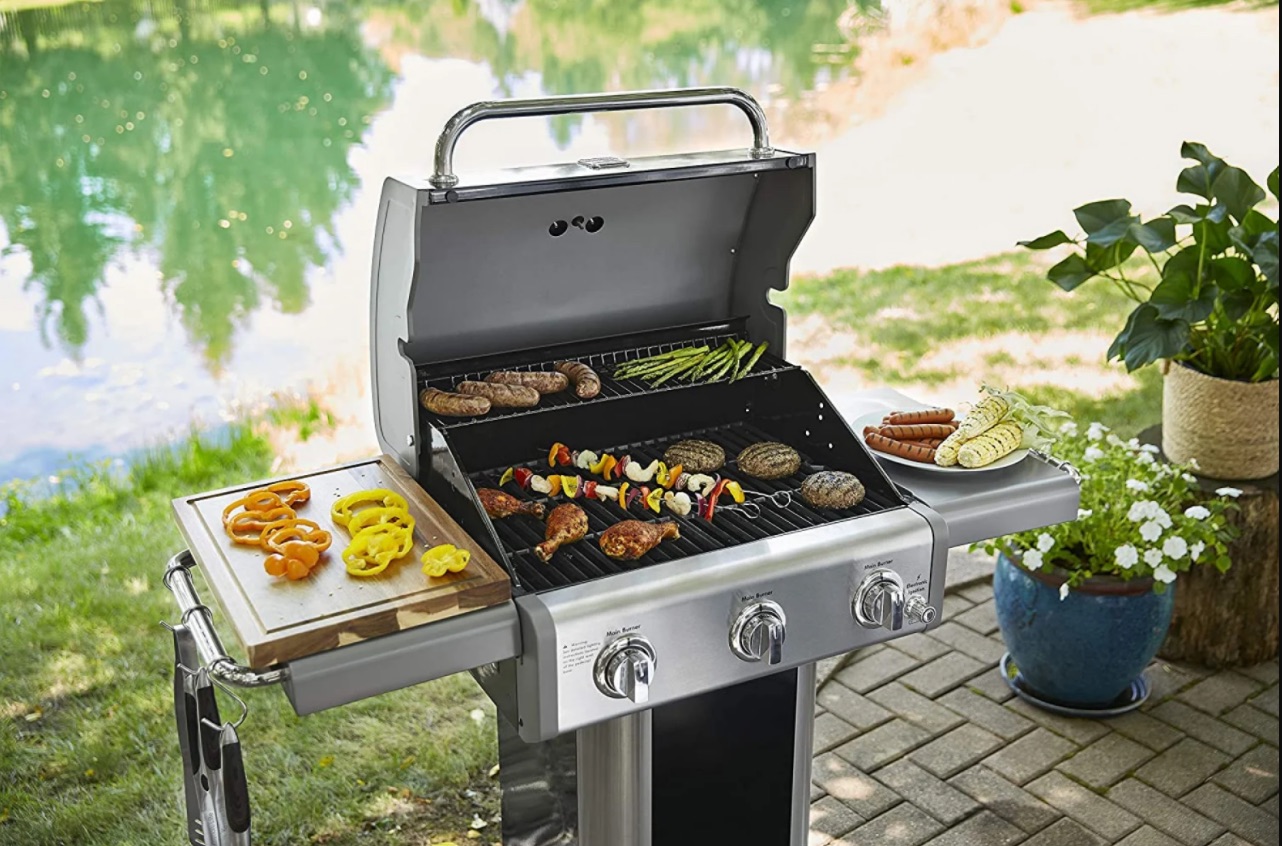

0 thoughts on “How Do Wood Pellet Grills Work”